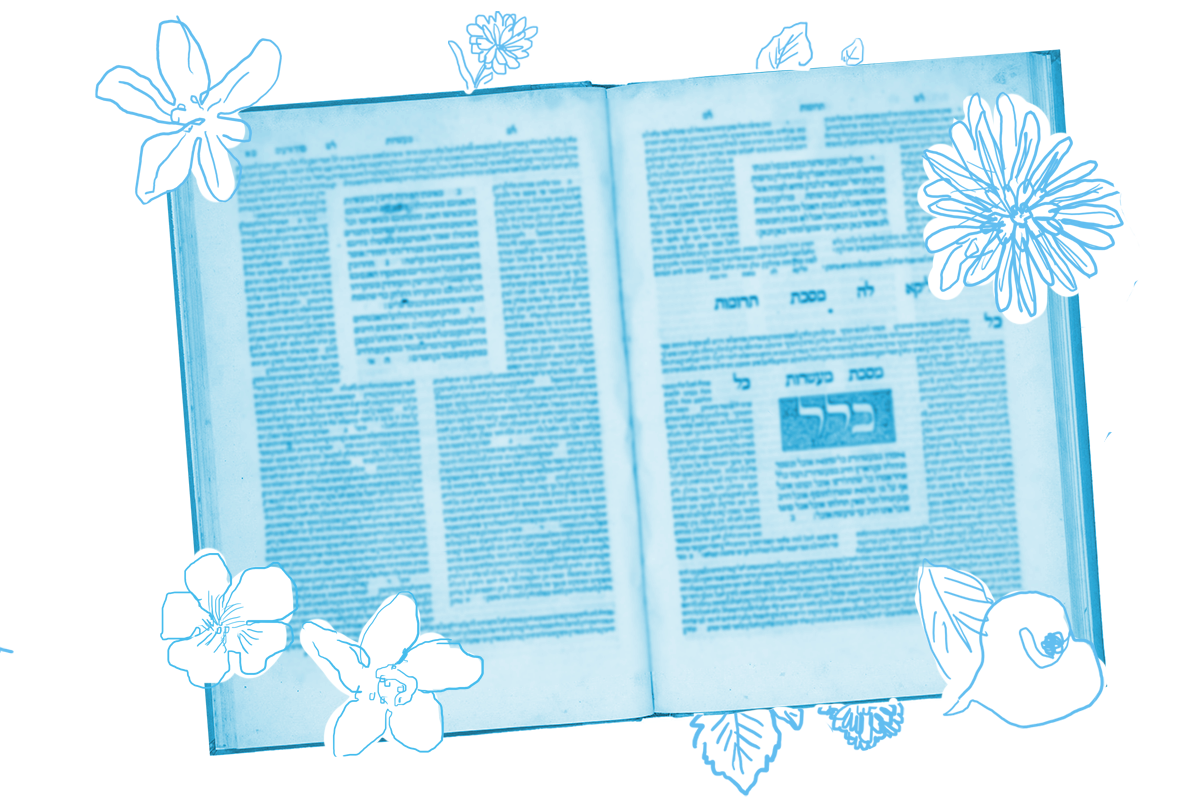Yesterday’s daf listed 10 conditions that Joshua bin Nun stipulated upon Israel’s entrance into the promised land, all of them relating to social contracts around farming. Today’s daf focuses on Joshua’s counterpart, Ezra, who led the Jews back into the promised land after the Babylonian exile. He too promulgated a few conditions.
Ezra instituted ten ordinances: (1) that communities read the Torah on Shabbat in the afternoon; and (2) that they also read Torah on every Monday and Thursday; and (3) that the courts convene and judge every Monday and Thursday; and (4) that one does laundry on Thursday; and (5) that one eats garlic on Shabbat eve. And (6) that a woman should rise early and bake bread; and (7) that a woman should don a breechcloth; and (8) that a woman should first comb her hair and only then immerse in a mikveh; and (9) that peddlers of cosmetics and perfumes should travel around through all the towns. And Ezra further instituted (10) immersion for those who experienced a seminal emission.
On first read, this list is hopelessly desultory. It includes halakhot for Torah reading alongside a statement about appropriate undergarments for women! Let’s unpack the list and see if we can find some coherence.
The Torah reading schedule, a longer reading on Shabbat and a preview of that reading on the previous Monday and Thursday, is attributed to Ezra, who chose those days because they were market days. Court sessions followed the same schedule so that when people gathered in the bigger cities they could avail themselves of everything those urban settings had to offer: market days, synagogues and courts with learned judges.
With your help, My Jewish Learning can provide endless opportunities for learning, connection and discovery.
The next set of ordinances on the list are best described as good advice for household schedules. One does laundry on Thursday in order to have fresh clothes to wear on Shabbat. Moving through the week, one eats garlic on Fridays because it was known to aid sexual relations (“instills love and removes jealousy”) which were encouraged on Shabbat eve. The list has shifted in perspective, from the schedule of the public synagogue to the inner workings of the home calendar.
Next on the list are women’s baking schedules (early in the morning, so that she has bread to give to beggars) and women’s clothing (undergarments for modesty, which were not yet all the rage). Moving away from schedules, the list turns to other women’s issues: Setting up markets such that women’s perfumes and cosmetics are available and the requirement of brushing hair before entering the ritual bath. Lastly, while we’re on the topics of mikveh, the final addendum is the requirement for men to immerse after a seminal emission.
We started with weekly Torah reading, passed through the invention of underwear and ended with the ritual baths! At first glance, the Gemara’s free association has taken us far afield. However, even this last part of the list reflects a schedule or a series of events that play out over time: According to the laws of menstrual purity after a woman’s cycle ends, she washes, immerses in the mikvah (ritual bath) and then reunites with her husband. This husband might buy her perfume for the special night (to make up for the smell of the aphrodisiac garlic, perhaps). After they resume intimacy, if the man ejaculates, he will have to go to the ritual bath.
The Gemara adds here that purification after ejaculation was originally necessary only if one planned to touch sacrifices and priestly gifts, but it was Ezra who added the ordinance that one ought to ritually immerse before learning Torah. And so our cycle is complete, from the weekly synagogue schedule, to town calendar, then to the home schedule — kitchen and bedroom — and back to the synagogue via the ritual bath.
Why attribute this calendar of communal and family scheduling specifically to Ezra? The book of Ezra describes the pivotal moment after the exiles returned from Babylonia in which Ezra read the Torah aloud to the people gathered in the town square, reacquainting them with the divine laws. But Ezra was also famous for demanding that men divorce the local non-Jewish wives that many had taken. This list, then, imagines Ezra the reformer beginning in the public square and ending in the bedroom.
Read all of Bava Kamma 82 on Sefaria.
This piece originally appeared in a My Jewish Learning Daf Yomi email newsletter sent on January 23rd, 2024. If you are interested in receiving the newsletter, sign up here.



